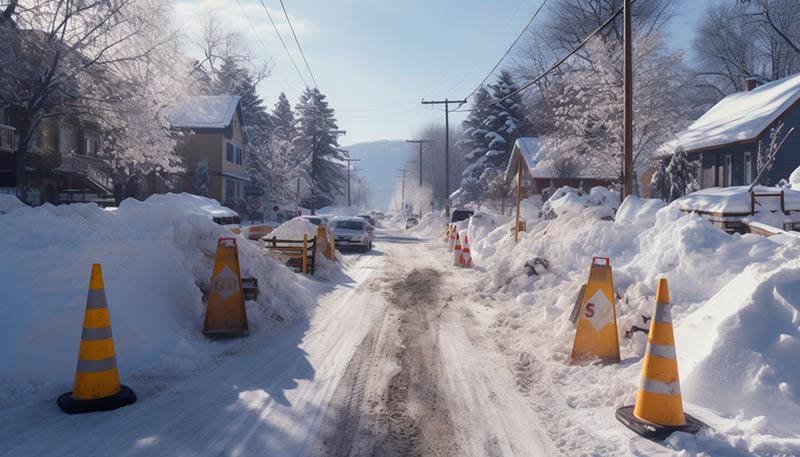The idea of discussing AI-generated images came to mind last week after I received an e-mail from a law firm claiming that one of our affiliate websites had used a copyrighted image. As the story unfolded, it turned out that the image was included in an RSS feed they were legally importing. The moral of this story is to ensure you have the proper paperwork covering the image copyright of any content you import – which they did. That’s important because the images in any RSS feed may be authorized by the photographer for the parent website but may not apply to affiliates that import that content.
The Challenge of Image Copyright
Artificial Intelligence (AI) can be a handy tool for copyright-free images. You may hear of a radio station getting hit with an image copyright lawsuit and think images are too much trouble to worry about. Any engaging website must contain images. Numerous studies over the years have proved that images get more clicks than words do. Images are crucial in attracting and retaining listeners. Until now, the only alternatives were paying for stock image services or royalty-free websites like pexels.com. With the rise of AI technology, there’s a promising solution without the hefty price tag or reading the fine print on traditional image services.
AI Tools to the Rescue
AI tools, such as OpenAI’s DALL-E, Midjourney, Leonardo, Artbreeder, and others, can create unique, copyright-free images based on textual descriptions. This technology offers a way out of image copyright infringement issues, providing a limitless source of original visuals for radio station websites.
AI-generated images can significantly reduce reliance on expensive image services and the risk of copyright infringement. Here are several ways AI can assist:
– Cost-Effectiveness: AI tools can generate a wide range of images at a fraction of the cost of traditional stock photo services. Most good services are paid. Nearly all will have free plans that you can try, though.
– Customization: AI allows for creating highly customized images that perfectly match the content of articles, shows, or promotional materials. While I love the ability to conversate with ChatGPT’s DALL-E model, other services like Midjourney and Leonardo can produce more photo-realistic images.
– Legal Safety: By using AI-generated images, radio stations can avoid the legal pitfalls associated with unauthorized use of copyrighted images.
For instance, a radio station promoting a jazz night can use an AI tool to generate unique artwork that captures the essence of jazz music without worrying about copyright issues.

Or you may need an image of a blocked snow-covered road for a news story.

Best Practices for Using AI-Generated Images
To ensure the effective use of AI-generated images, consider the following guidelines:
– Review and Edit: Always review AI-generated images for appropriateness and alignment with your brand’s image. Some AI-generated content may require edits to fit your specific needs.
– Blend Sources: Combine AI-generated images with other sources, such as Creative Commons photos or commissioned artwork, to diversify your visual content.
– Stay Informed: Keep abreast of developments in AI technology and copyright law to ensure your use of AI-generated images remains compliant and effective.
– Attribute Anyway: Always attribute where you got your image from, just in case, to avoid any future issues. If a claim were to arrive years from now, you may need help remembering where you got the image from.
Use AI-generated Images Responsibly
When utilizing AI image generators, it’s crucial to exercise caution to avoid creating likenesses that could infringe on copyright laws. AI technology has the impressive ability to produce highly detailed and creative images. Yet, it operates within a complex legal landscape, especially concerning copyrighted characters, celebrities, and other protected intellectual properties. Generating images closely resembling such copyrighted entities without explicit permission can lead to legal challenges and copyright claims. Therefore, using these tools responsibly is essential, focusing on creating original content that doesn’t replicate or closely mimic copyrighted or trademarked material. By doing so, creators can harness the power of AI while respecting copyright laws and fostering a culture of innovation and respect for intellectual property.
Alternatives and Complements to AI Tools
While AI tools offer a novel solution, try not to depend on them entirely. Traditional image acquisition methods remain valuable. The best images to use on your website are the ones you’ve taken yourself. Create a database of everything in your community from school buses, police cars, fire trucks, town buildings, schools, and other landmarks. Back that up with Creative Commons images and stock photos with clear licensing for commercial use. All of these can provide a rich visual experience on your website.
Conclusion
AI-generated images present a groundbreaking opportunity for radio stations to enhance their websites visually without fearing copyright infringement. This new world of AI is evolving very quickly. Staying at the forefront will be the key to captivating audiences and ensuring the success of your radio station’s online presence.
And, as a final reminder. If you are importing content from anywhere online, please ensure you have the proper copyrights to display the images found in those feeds. The copyright hounds often use saved versions of your website going back years ago to find copyrighted material.
We want to help your radio station grow and succeed online. That journey starts with an amazing website that keeps visitors coming back often. Reach out to us to start your path to online success, or schedule an appointment to see our tools in action.
